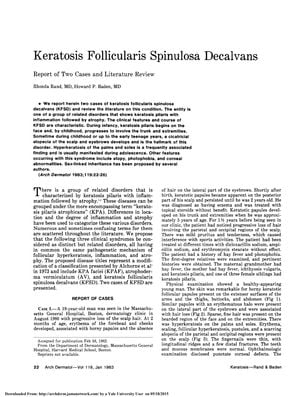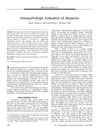Keratosis Follicularis Spinulosa Decalvans
January 1983
in “
Archives of Dermatology
”

TLDR KFSD is a rare condition causing scarring hair loss, with no effective treatment known at the time of the report.
In 1983, Rhonda Rand, MD, and Howard P. Baden, MD, reported on two cases of keratosis follicularis spinulosa decalvans (KFSD), a rare condition that starts with keratosis pilaris in infancy and leads to scarring hair loss on the scalp and eyebrows by childhood or early teenage years. The 19-year-old male and 22-year-old female patients both had progressive scalp alopecia and a history of keratosis pilaris, but treatments including topical steroids and vitamin A were ineffective. The authors proposed that KFSD is part of a spectrum of disorders called "KPA," characterized by follicular hyperkeratosis and scarring, with KFSD affecting only the follicle. They suggested that since the disorders may be related to keratinization of the hair follicle, a trial with a new synthetic retinoid could be beneficial, although no effective therapy was known at the time. The study was supported by the National Institutes of Health.





